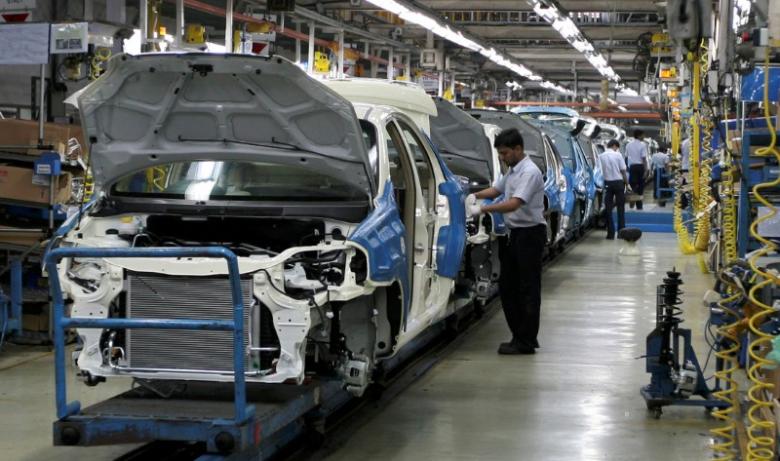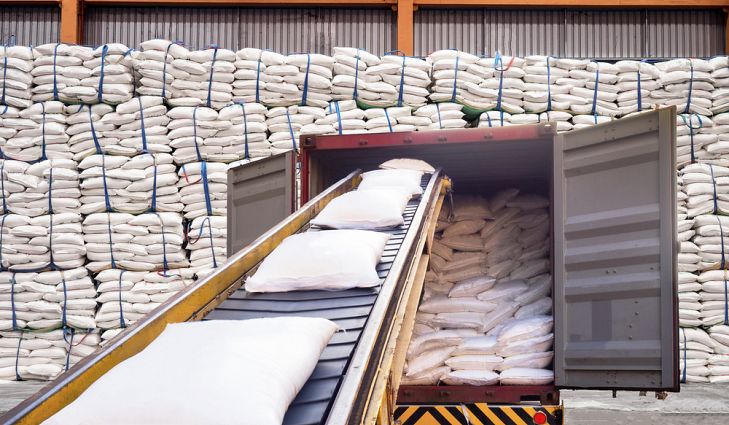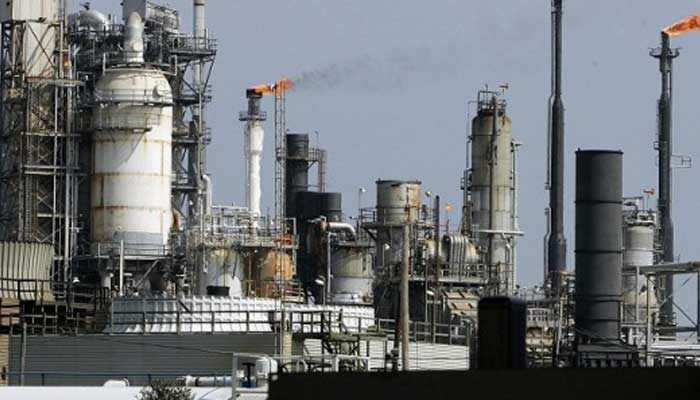ISLAMABAD: The growth in large-scale manufacturing (LSM) industries moderated to 5.2% in the first quarter of current fiscal year, as the industries were poised to face the impact of high input prices and shortage of gas in winter.
During the July-September period of fiscal year 2021-22, the LSM sector output grew 5.2%, the Pakistan Bureau of Statistics (PBS) reported on Thursday. In the first two months of FY22, the LSM sector had registered a growth of 7.3% that slowed down due to the negative growth in September over the preceding month.
On a month-on-month basis, the LSM sector contracted by less than 1% in September over August, according to the PBS. The year-on-year growth rate in September was only 1.2% over the same month of previous year.
The low base effect has so far been driving the growth in large industries as the index had dropped to the low level of 86.2 in April last year from the peak of 160 before Covid-19 struck Pakistan. The index still remains below the pre-Covid level as it stood at 139.8 in September.
Out of 15 major industries, 12 recorded a growth in their output while production in the remaining three sectors contracted.
Since large industries contribute heavily to revenue collection and job creation, any change in their growth accordingly impacts the government and business sentiment.
The government has recently increased electricity prices for domestic and industrial consumers, which will impact their cost of doing business. The industrial sector’s raw material has also become significantly expensive due to depreciation of the rupee. According to the World Bank, 80% of imports of Pakistan comprise raw material and intermediary goods being used by the industrial sector. The rupee has been on the slide since May this year, which will adversely affect Pakistan’s businesses.

The overall industrial sector contributes 63% to the total tax collection. But during the first four months of current fiscal year, the growth in sales tax collection at the domestic stage remained flat despite the Federal Board of Revenue (FBR) exceeding its overall target by Rs235 billion. Owing to the growing gap between demand and supply, the Ministry of Energy on Thursday told the Cabinet Committee on Energy that the country would face cumulative gas shortage of 2.2 billion cubic feet per day (bcfd) between November 2021 and January 2022.
The energy ministry said that there would be gas shortage of 444 mmcfd in November, which would increase to 717 mmcfd in December and would peak at 961 mmcfd in January 2022. The government has planned to divert gas from the industrial sector to the domestic consumers for its use in heating and cooking during the winter season.
“In extreme winter, the curtailed gas from CNG stations, cement and general industry will be diverted to the domestic sector for the comfort of citizens,” said the Ministry of Energy. For the current fiscal year, the government has set the economic growth target at 4.8%. However, a recent report of the International Monetary Fund (IMF) projected that Pakistan’s economic growth would stand at 4%, which was a decent rate but nearly half of what was required to create jobs for all new entrants into the market.

A report of the World Bank showed that only agricultural growth would surpass last year’s level in the current fiscal year and it projected a slowdown in industrial and services sectors. Prime Minister Imran Khan won the July 2018 elections on the promise of creating 10 million jobs and constructing five million homes at affordable prices for the general public.
The LSM data is being collected from three different sources. The data collected by the Oil Companies Advisory Committee (OCAC) showed that 11 types of industries registered a growth of 0.3% during the first quarter of current fiscal year.
The Ministry of Industries, which monitors 15 industries, reported a 3.3% increase in output during the July-September period. Similarly, the provincial bureaus reported over 1.6% growth in 11 industries, stated the PBS. Sectors that posted growth in the first three months of current fiscal year included textile, which grew less than 1%. The textile sector enjoys the maximum weight of over 20% in the LSM index and any movement in the segment significantly impacts the overall LSM sector growth.
The output of food and beverages increased 3.4%, coke and petroleum products 4.8%, pharmaceuticals nearly 12% and chemicals 4.7%.

The non-metallic mineral products sector expanded 1.4% during the first quarter. Production of the automobile sector increased over 42%. The iron and steel sector saw a growth of 13.8%. The manufacturing of leather products increased 14%, paper and board 13%, engineering products 3.2% and wood products 4.4%.
There was a dip of 2.7% in the output of fertiliser plants as the government struggled to provide gas to urea producers to enable them to function at full capacity.
Media person and communication expert for over 25 years. Worked with Dow Jones News, World Bank, CNBC Pakistan, Aaj TV, ARY TV, Abbtakk TV, Business Recorder, Pakistan Observer, Online News Network, TTI Magazine and other local and world Publications.










